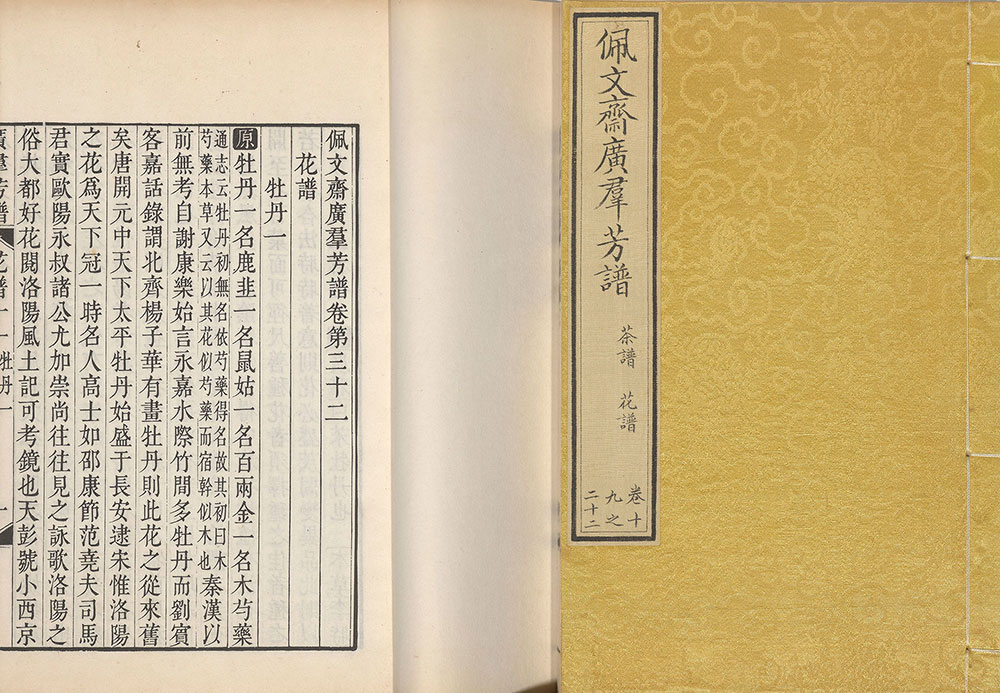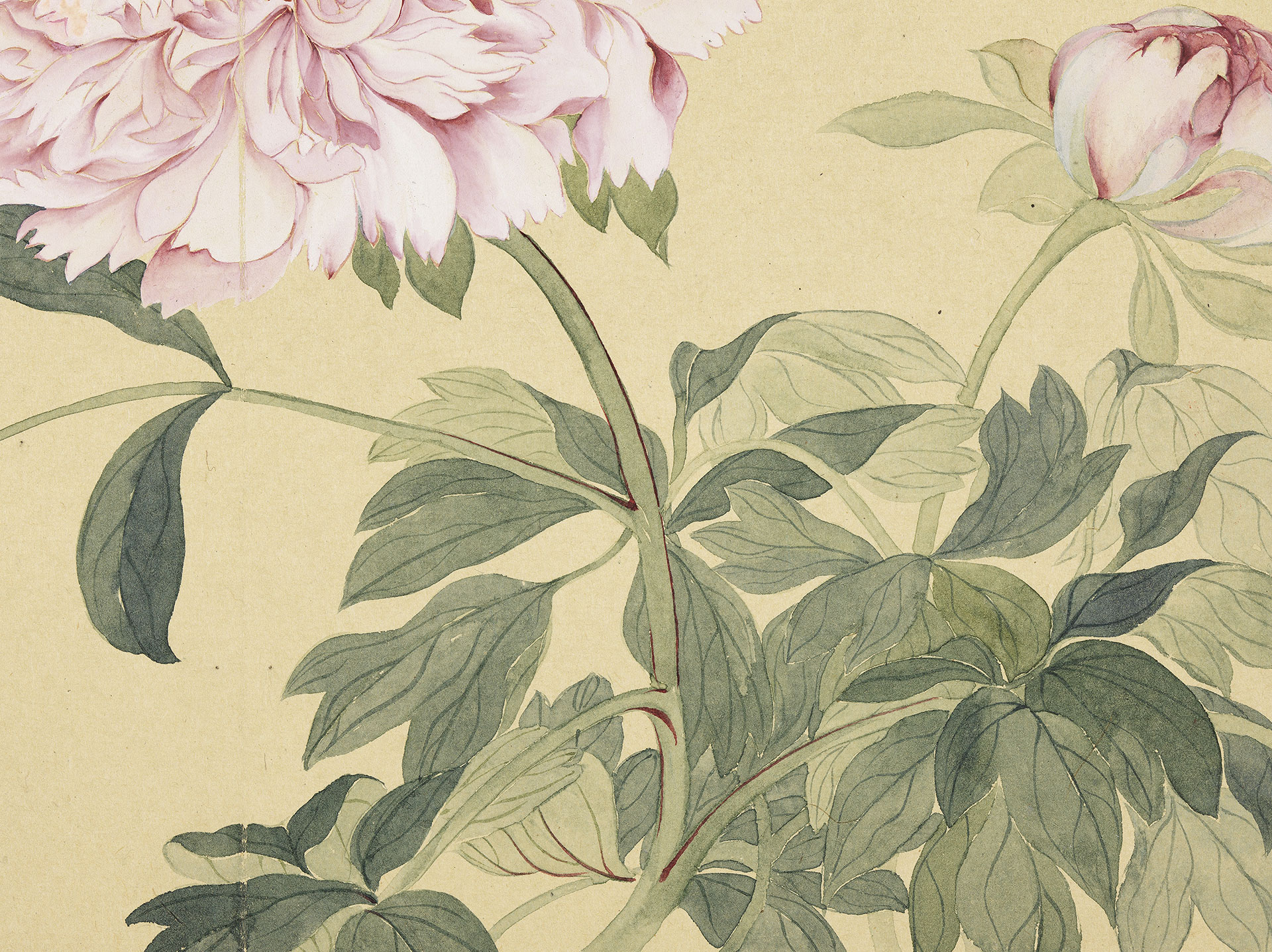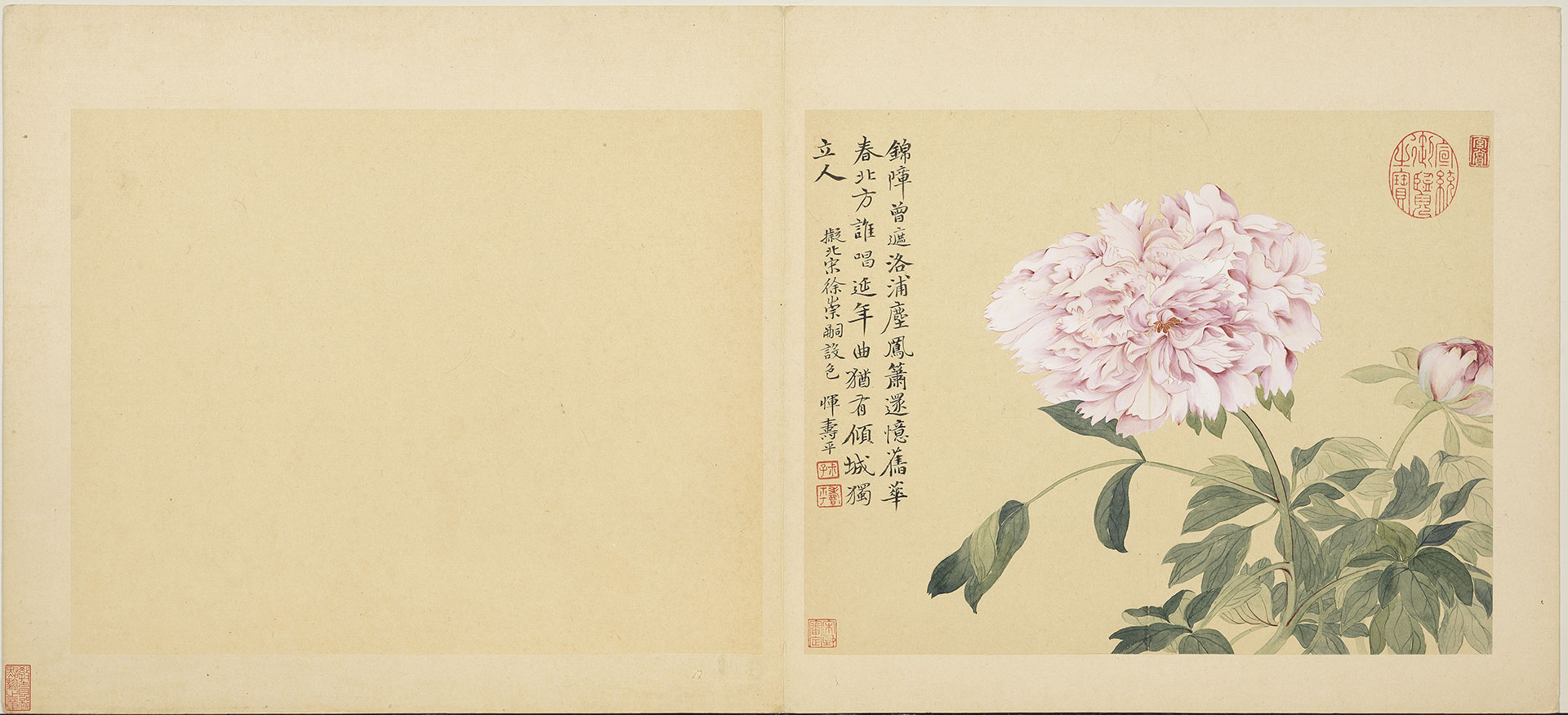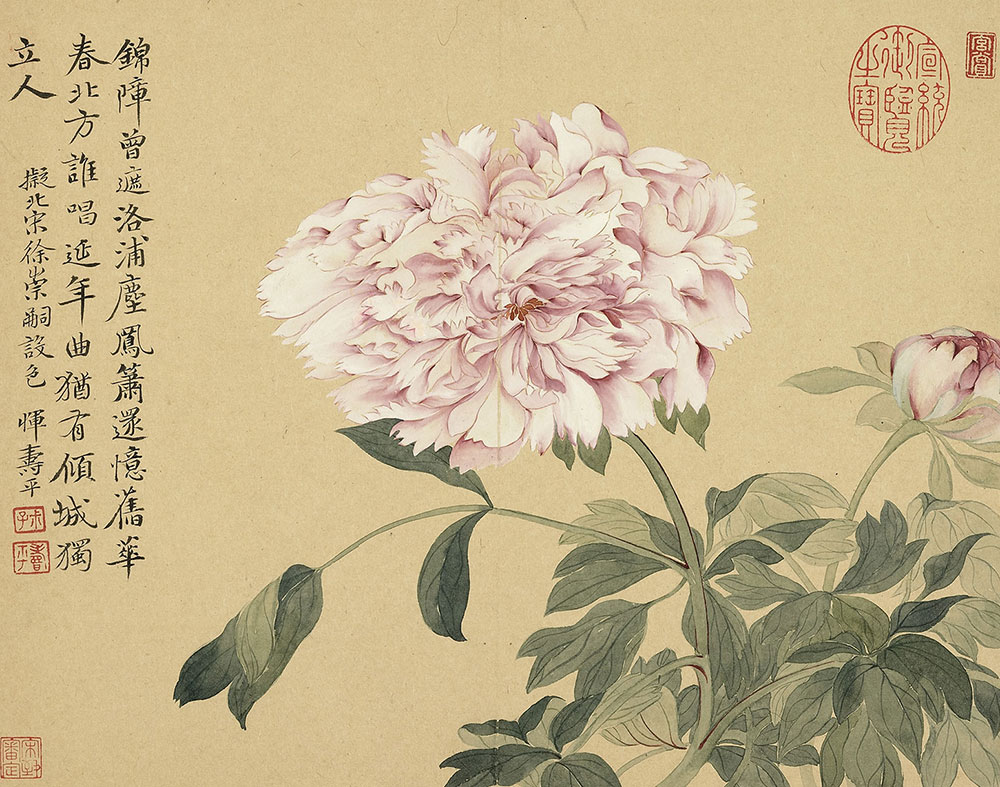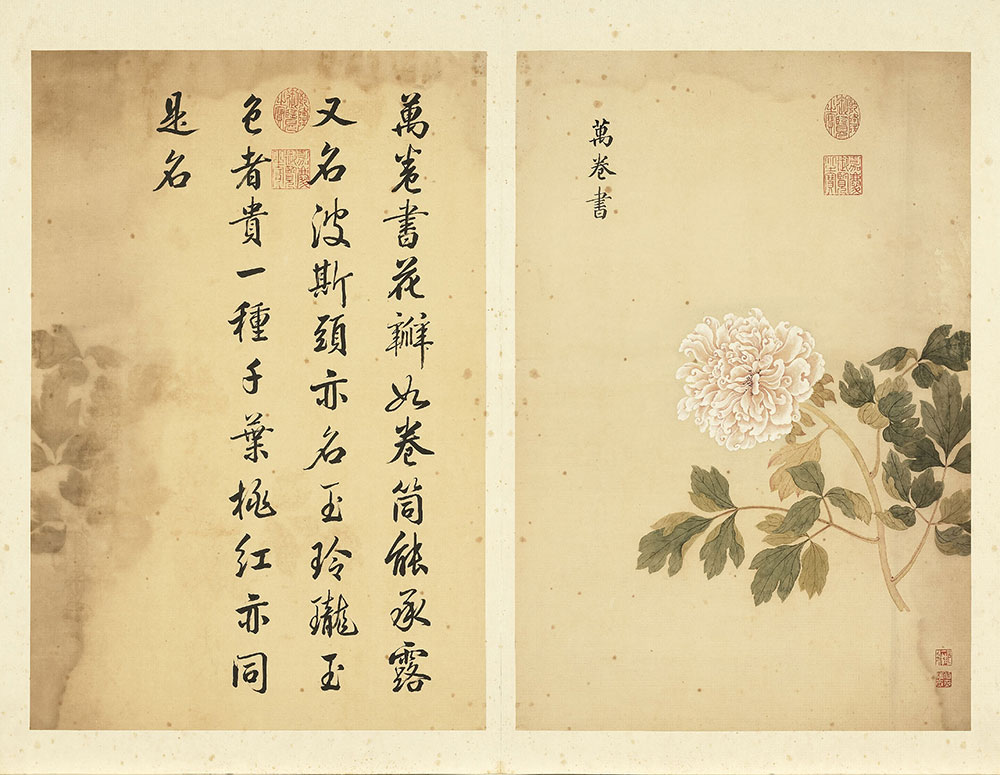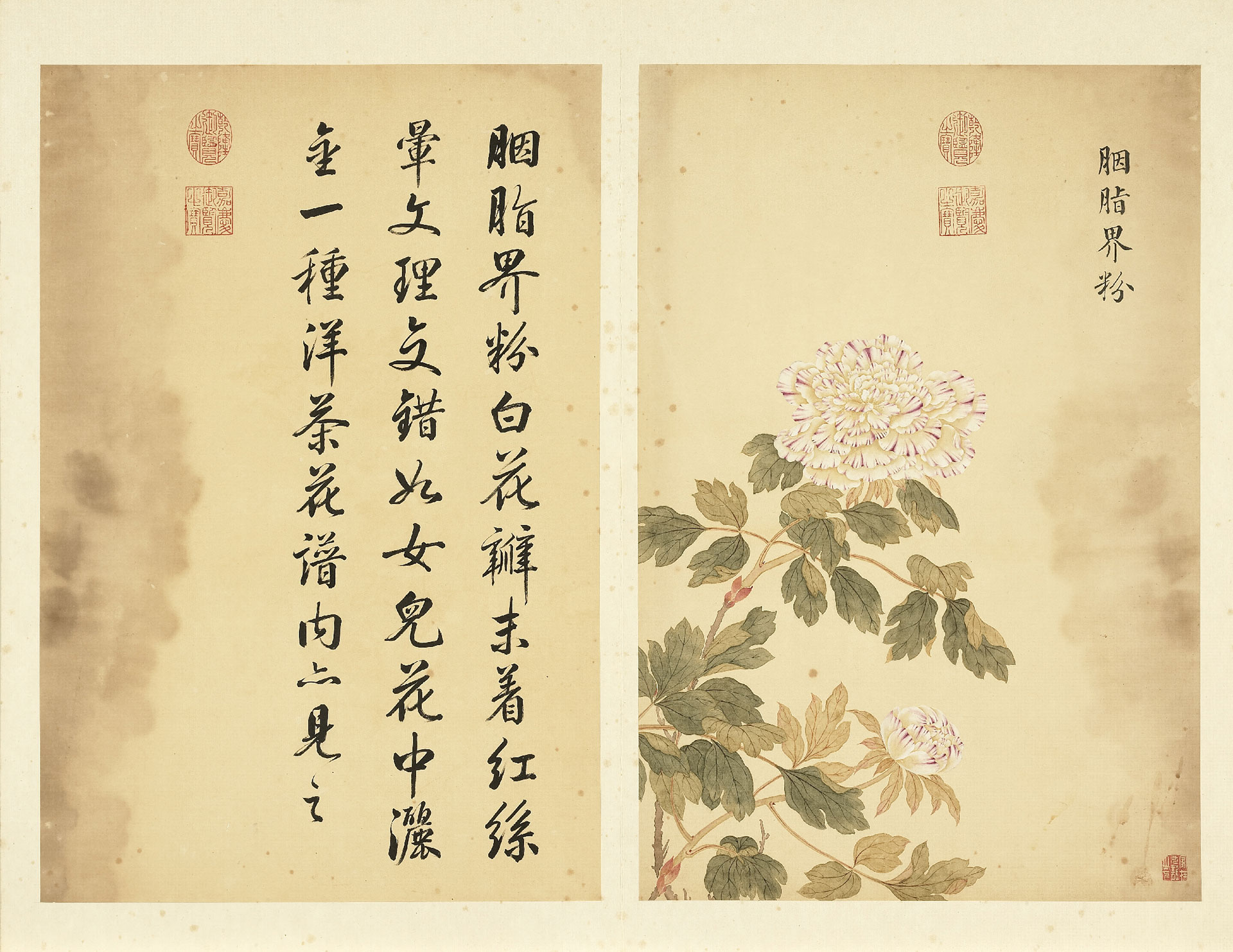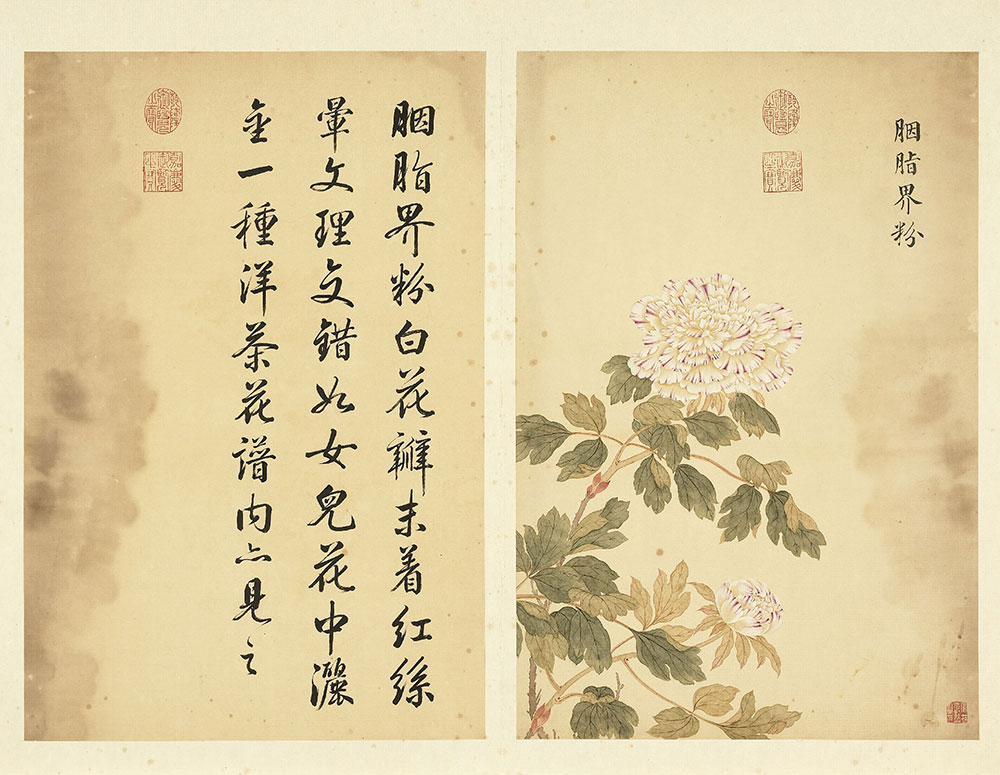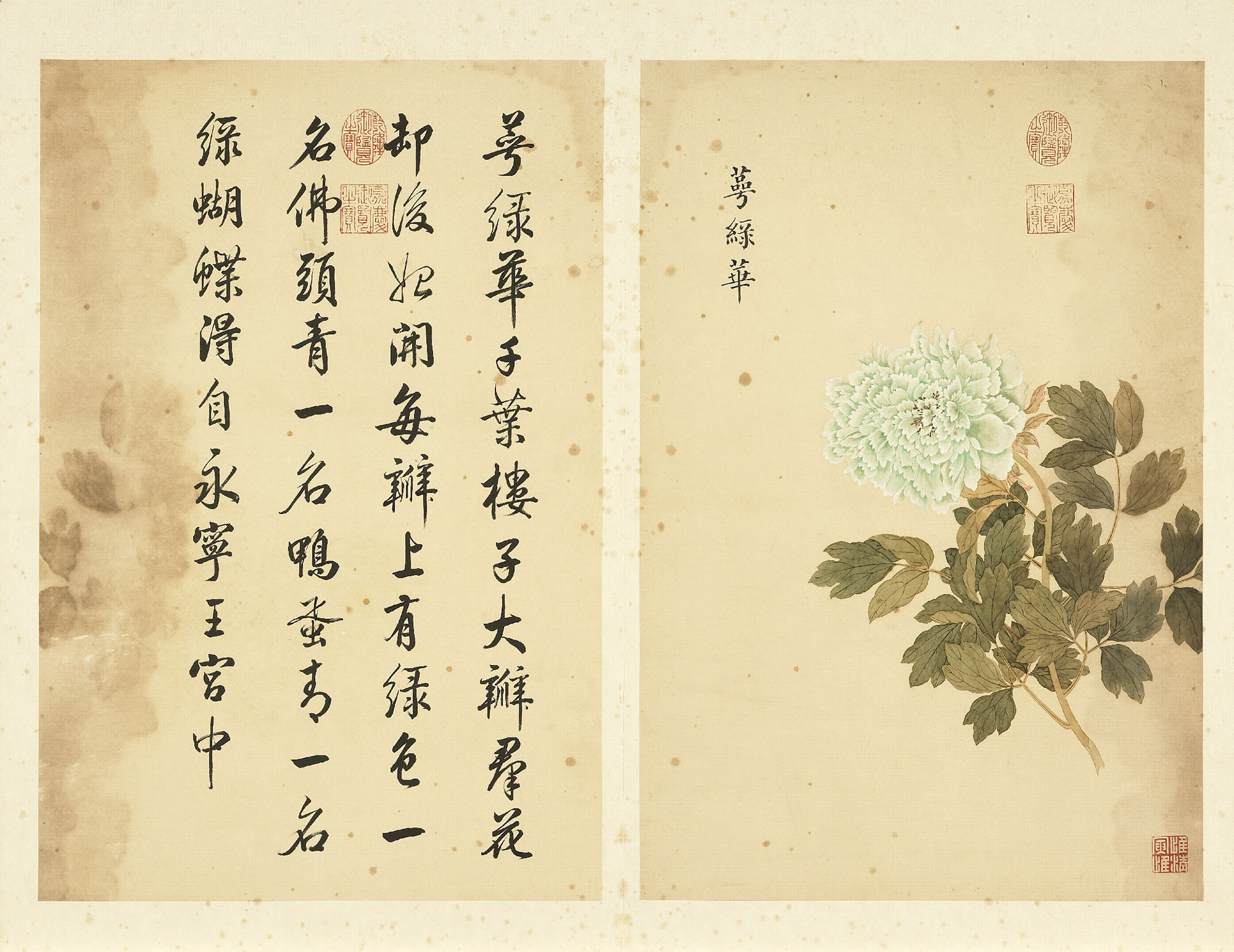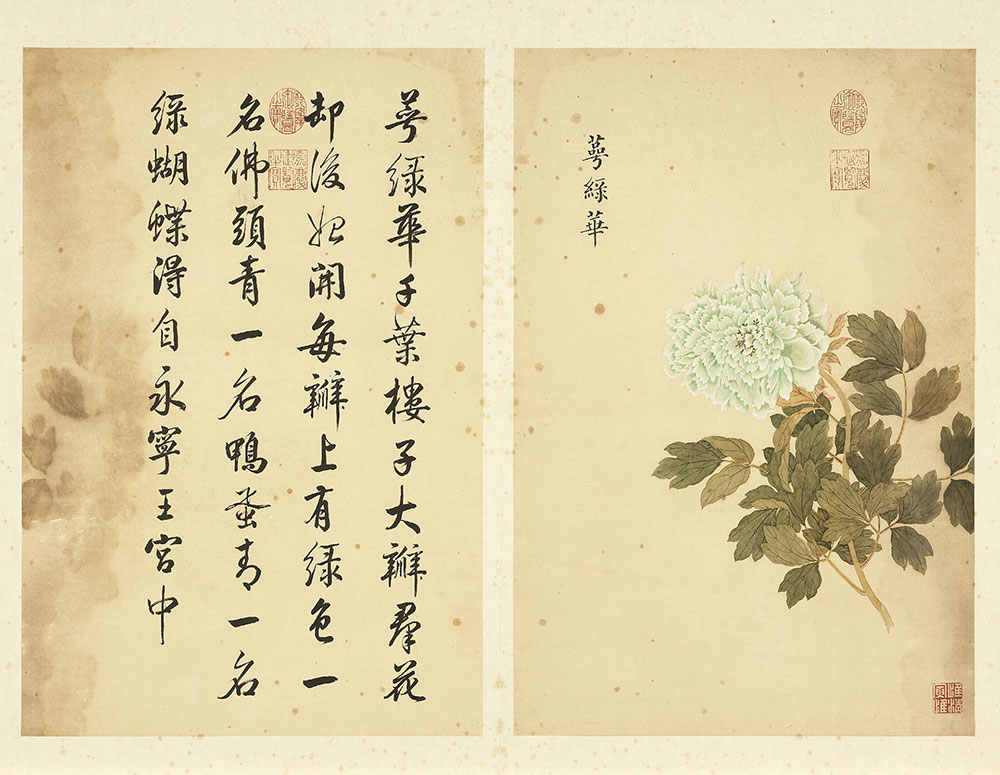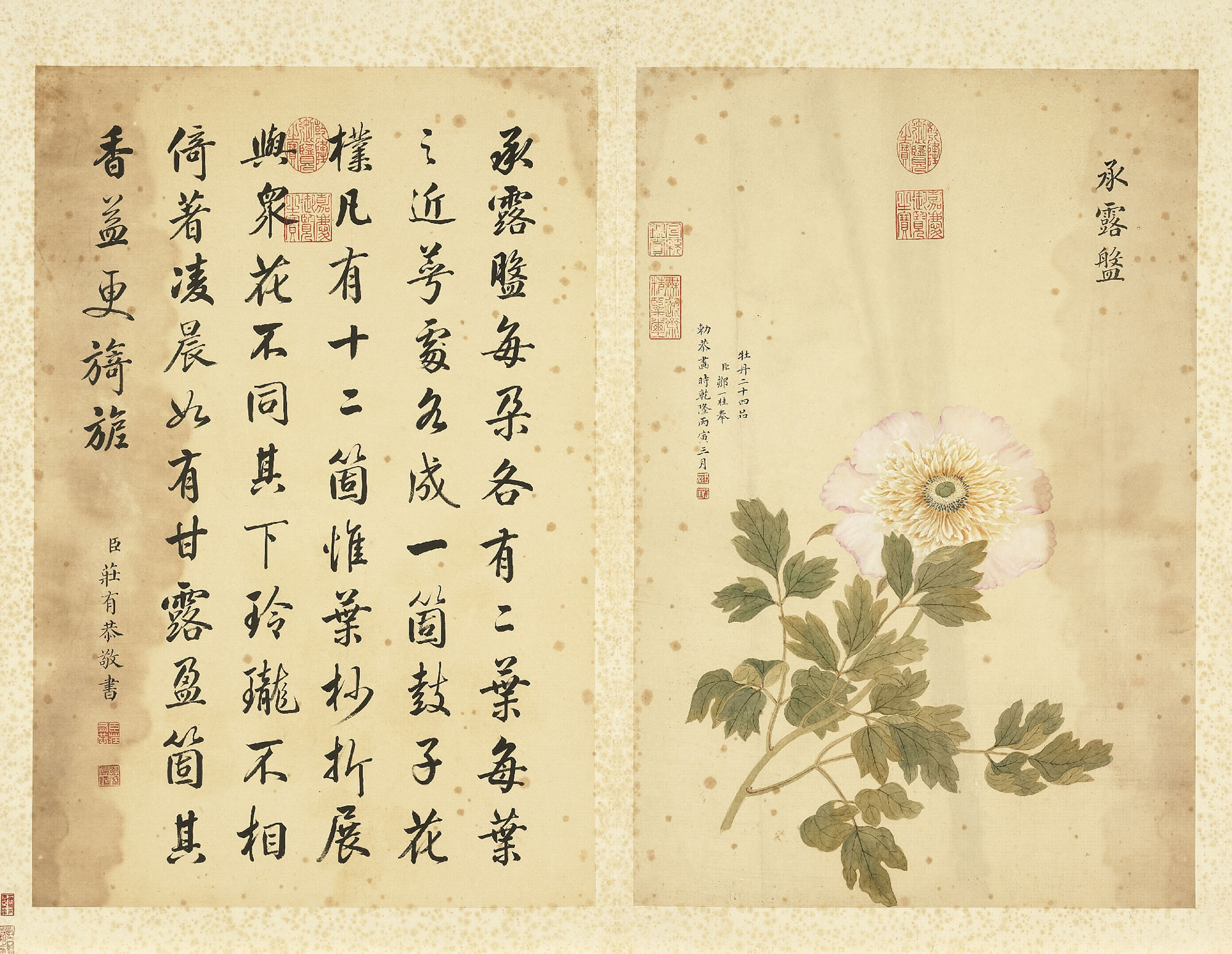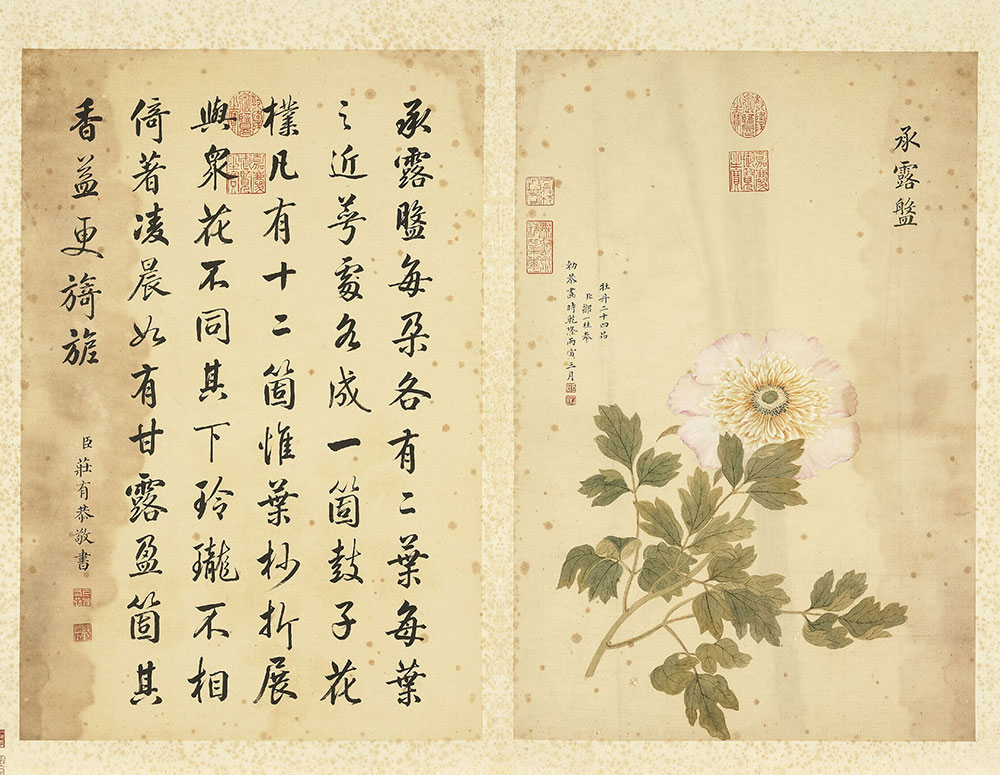Encyclopedic Research into Flowers
Almost any question about flowers or plants can be answered by consulting the Record of all Fragrant Flowers. Compiled during Emperor Kangxi’s reign, this floral-botanical encyclopedia contains the alternate names, growth habits, varietals, and histories of countless plants, in addition to poems and odes written about them by literati over the centuries. This text is thus one of the most important references for researching the poetry emperors and scholars wrote to praise the glory of flowers in bloom.
In response to the Qianlong Emperor’s (born Aisin-Gioro Hongli; 1711-1799) passion for connoisseurship and research, the scholar-attendants and artists in his retinue produced a great variety of paintings of flowers and plants. These artworks served as backdrops upon which the emperor displayed his talents for calligraphy and poetry, as he enjoyed himself by naming the flowering plants in the paintings or embellishing them with poetry written in his own hand.
Collections of Illustrations of Flowering Plants
Tupu is a Chinese word referring to collections of illustrations revolving around a particular theme that are brought together into an album format. In these collections, each image typically is typically labeled by the name of whatever it depicts, ensuring that identification is a simple matter. Large numbers of tupu featuring colored illustrations began to appear during the Ming and Qing dynasties. These collections concentrated on using rich and detailed coloration to display their subject matter's unique features and appearances, in an effort to leave behind a visual record of all manner of objects found in the world.
- Peiwen Studio Record of All Fragrant Flowers
- Kangxi Era 47th Year Wuying Hall Woodblock Print Edition
- Wang Hao, et al, Qing dynasty
The Peiwen Studio Record of All Fragrant Flowers is a compendium of botanical knowledge comprising 100 fascicles—“Peiwen Studio” was the name of the Kangxi Emperor’s (1661-1722) personal library. This official imperial document, the editing and compilation of which was commissioned by Kangxi and spearheaded by his scholar-attendant Wang Hao (1671-1706), is in fact a revised and expanded edition of the Record of Fragrant Flowers, a compendium created during the Ming dynasty by Wang Xiangjin (1561-1653). Wang Hao, who accompanied Emperor Kangxi on excursions he led north of the Great Wall to escape the heat of Beijing’s summer, wrote a book entitled Recollections of His Grace by an Attendant to the Emperor narrating their journeys. The Record of All Fragrant Flowers was expanded with information on flora from north of the Great Wall, much of which appears in Wang Hao’s Recollections.
This book is similar to a modern encyclopedia. Its contents present each plant’s common name, alternate names, zone of distribution, growth characteristics, and uses (including as medicinal herbs or culinary ingredients). It also present poems and prose written about each plant throughout the centuries, presented in a highly readable and easily navigable format. The Qianlong Emperor (1711-1799) regularly consulted the resources found in the Record of All Fragrant Flowers when writing poetry, and would then write down his own opinions after concluding his research.
- Peonies
- Yun Shouping, Qing dynasty
- Paper
This depiction of one peony blossom in full bloom and another still in its bud was painted using the unoutlined “boneless” (mogu) technique. With this technique, outlines are first sketched using thin lines of ink, after which the artist switches to meticulous applications of color in order to render the subjects’ forms. For this work, the artist blended ochre pigments with powdered white or indigo pigments as he painstakingly painted each of the flower’s petals, before ultimately using reddish-brown paint to paint the petals’ edges. The painting’s composition places special emphasis on the flowers and leaves’ softness and weightlessness, as though capturing the essence of a moment when the plant swayed gently in the breeze.
Yun Shouping (1633-1690) was one of the six masters of early Qing dynasty painting. His thorough reinterpretation of Northern Song dynasty artist Xu Chongsi’s (late 10th century) mogu painting techniques enjoyed great popularity during the Qing dynasty. Although Yun himself was never summoned to court, his painting style was brought to the imperial palaces by way of his disciples and other painters hailing from his hometown of Changzhou in Jiangsu province. Yun thus exerted a great influence on the flowers-and-plants paintings of that era, so much so that even Emperor Qianlong made copies of his painted depictions of flowering plants on several occasions.
- Zou Yigui, Qing dynasty
- Paper
Precious Forest of Ink Marvels is a compilation comprising twelve albums, each of which contains twenty-four separate leaves. Each album was painted by one of a dozen different artists active during Emperor Qianlong’s reign and devoted to a different theme. The album on display in this exhibition, entitled “Twenty-four Pictures of Peonies,” was painted by Zou Yigui (1686-1772) and inscribed with calligraphy by Zhuang Yougong (1713-1767). Their combined efforts yielded an illustrated record of peony flowers replete with both painted images and the written word. Zhuang’s calligraphy was transcribed from entries on different peony varietals recorded in the Peiwen Studio Record of All Fragrant Flowers, an encyclopedic compendium of botanical knowledge. Zou’s illustrations of the flowering plants convey in pictures that which could not be expressed in words.
Zou Yigui passed the imperial examinations during the fifth year of Qing dynasty emperor Yongzheng’s reign (1727), obtaining the title chuanlu, which indicated that he placed first among those in the second rank of “presented scholars.” He was a related to the painter Yun Shouping (1633-1690) by marriage, and like Yun was talented at painting using the mogu or “boneless” technique. Each work this album was composed such that a large blossom appears at the center of the painting, with branches and leaves extending to the flower’s left and right sides. This composition accentuates the lateral undulations followed by these flowering plants’ curves, filling the album with a compelling sense of personality.


